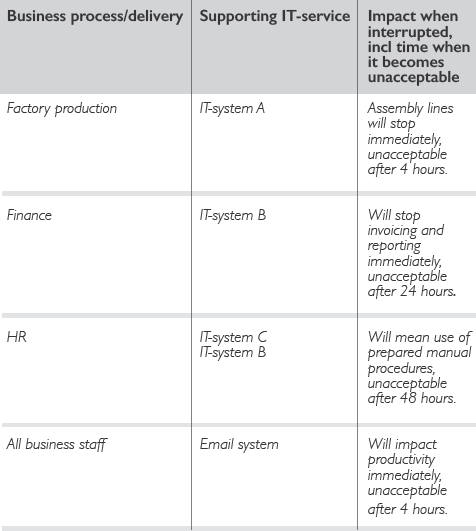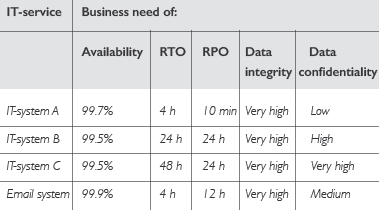
Keeping the lights on
Enhancing data availability is something that is on the minds of many in the manufacturing industry. Today, data is king. Thanks to the digital transformation of the industry, the data mountain continues to get bigger and bigger. In fact,  according to IDC, it will reach an incomprehensible 175 zettabytes by 2025.
according to IDC, it will reach an incomprehensible 175 zettabytes by 2025.
Unlocking this data has never been more critical. However, ensuring your teams have access to this data when the unthinkable happens can be a real challenge. Unfortunately, in the climate we now live, having that data made unavailable is not a question of if but when. Whether caused by an over-enthusiastic staff member clicking the wrong button or a state-sponsored, ultra-sophisticated cyberattack, swift recovery from a data disaster can be the difference between extinction and survival.
With that in mind, we have put together a template to help manufacturers familiarize themselves with the building blocks of an IT Disaster Recovery Plan (IT DRP). Filling out the plan will also encourage thinking about what it would take to resume normal operations if their data and infrastructure were implicated in a severe IT-incident.
It is essential to get ahead of the problem and detail the policies and procedures you need to follow in the event of a disruption to critical IT services or damage to IT equipment or data. These processes will ensure that those assets are recoverable to the right level and within the right timeframe to deliver a return to normal operations, with minimal impact on the business.
A good starting point is to undertake a thorough business impact analysis. In this, the first section identifies important IT-services needed for the business and the impact if interrupted. The second section focuses on the business needs regarding availability, recovery times, backup, data integrity and data confidentiality.
The Recovery Time Objective (RTO) is the time frame agreed upon to get the business process/delivery operational again after an IT-interruption. The Recovery Point Objective (RPO) is the acceptable amount of data you can lose in an incident without being able to recover it to a previous ‘point in time’. Data integrity is the demand that information stays intact, and data confidentiality is the demand that ensures that information is not made available to others.
When the need for essential IT-resources is identified, you need to do an analysis to ensure you have the right level of robustness to support your business. The best way is to contact the individual responsible for each IT-service in-scope for the planning work and have an extensive discussion about  the business need and what is covered in the service today. In the end, it is a business decision on what to have in place, including what risks the business is willing to take.Finally, you need to identify just how you will respond should one of your key systems fail. This part of the business continuity plan covers preparations to handle IT-interruptions efficiently so that you can reduce the impact on the business. Cyberattacks, rogue employees, natural disasters, media damage and human error are just a few ways you can lose access to your data.
the business need and what is covered in the service today. In the end, it is a business decision on what to have in place, including what risks the business is willing to take.Finally, you need to identify just how you will respond should one of your key systems fail. This part of the business continuity plan covers preparations to handle IT-interruptions efficiently so that you can reduce the impact on the business. Cyberattacks, rogue employees, natural disasters, media damage and human error are just a few ways you can lose access to your data.
IT teams in the manufacturing industry are increasingly focusing on resilience as a strategic objective to ensure that the data that is core to their business remains available 24/7. It is a case of keeping the lights on when disaster strikes. It goes beyond simple business continuity and disaster recovery planning, though. It should encompass an  entire culture and practices. In the age of digitization, data is integral to every business, so protect what is most dear.
entire culture and practices. In the age of digitization, data is integral to every business, so protect what is most dear.
Philip Bridge
Philip Bridge is President of Ontrack. KLDiscovery Ontrack, LLC (doing business as Ontrack) provides technology-enabled services and software to help corporations, state/local/federal government agencies, educational institutions and consumers solve complex data challenges. As a business unit of KLDiscovery, Ontrack provides market-leading data recovery services for any type of media – hard drives, SSD, servers, RAID, virtual, cloud, mobile devices, tape, NAS/SAN/DAS. Additionally, through proprietary technologies and expert services around the globe, Ontrack provides additional solutions for clients with email extraction, tape management, and data destruction.
www.ontrack.com/uk.